We look at the influential career of a genre icon and attempt to rank the impressive filmography of George A. Romero from worst to best.
Genres are usually nebulous things, formed from disparate sources and refined over a period of years, or even decades. It’s exceedingly rare to be able to trace a genre back to a single individual, particularly one as beloved and widespread as the zombie genre that has permeated nearly every facet of American popular culture.
While the name “zombie” originates with the mute, mostly-dead human slaves of Afro-Caribbean folklore, the image of the modern zombie — the shambling reanimated corpse with a ceaseless hunger for human flesh — can be traced directly to an independent movie shot outside of Pittsburgh, Pennsylvania in 1968, directed by a young commercial filmmaker named George A. Romero, setting out to prove he could direct a feature film.
Romero’s influence on horror cinema is well-documented, and really cannot be overstated. Often called “the godfather of the modern zombie,” his vision of the undead has become one of the most beloved and recognizable figures of American culture, and the rules he created for them are still being used and expanded upon to this day.
But while his impact on zombiedom is undeniable, Romero had a long and varied career, working within a number of genres outside of his iconic DEAD series of films, crafting unique takes on witches, vampires, and even romantic comedy.
With the recent release of Romero’s long-lost film The Amusement Park (not included in this ranking, but you can read my full review here) — and having just passed the anniversary of his passing on July 16, 2017 — it’s a perfect time to look back on the highs and lows of the maestro’s career.
Here’s my list of every George A. Romero film, ranked from worst to best.
16. Diary of the Dead (2007)
After going bigger and bolder with each Dead film from Night to Land, Romero took it back to basics for his final two installments, essentially rebooting the franchise with 2007’s Diary of the Dead. Released at the start of the found footage craze, it finds Romero fitting into the trends of the era, accidentally or not, more than at probably any point in his career.
Taking place concurrently with the events of Night, though obviously in a different era, Diary follows a group of film students attempting to make a horror movie when the dead start rising up. His knack for social commentary is still present — if a bit obvious this time around — using the burgeoning social media era to touch on mass surveillance; the manipulation of media; and the idea that if something isn’t recorded, it may as well not have happened, something that would only grow more prevalent in the coming decade.
Looked at through a 2021 lens, the philosophy comes troublingly close to QAnon territory at times, with the politicians and media painted as liars, and anyone with a camera considered the only truth-tellers left.
Unfortunately, as chillingly prescient as the commentary is, the movie is undone by a clunky script and some seriously sub-par acting, with Romero’s signature hard-boiled dialogue landing with a thud coming out of the actors’ mouths. It has a handful of entertaining set pieces, like an extended sequence on an Amish farm, but these moments can’t save the film from falling flat and ending up, to my mind, the worst of his career.
WHERE TO WATCH: Diary of the Dead can be streamed for free (with ads) on Tubi.
15. There’s Always Vanilla (1971)
For his follow-up to the surprise smash hit Night of the Living Dead, Romero decided to make…a romantic comedy? Strange as it sounds, he did exactly that with his sophomore feature There’s Always Vanilla. Romero himself largely disowned the film after its release, often calling it his worst feature and “a total mess,” due in part, he claimed, to the screenwriter basically giving up halfway through production, leaving him with an unfinished script.
Thankfully, while not exactly a lost classic, There’s Always Vanilla is actually a better movie than I thought it would be; it’s a deliberately disjointed, arty take on the counterculture comedy.
Charting the romantic rise and fall of wayward youth Chris (Raymond Laine) and aspiring actress Lynne (NOTLD’s Judith Streiner), the film employs a number of unconventional techniques, from abrupt smash cuts to the acid-rock score by Barefoot in Athens (a band that I can find exactly zero information on). While there’s some interesting filmmaking on display, Chris comes off as a generally unlikeable character, and the gender and sexual politics are incredibly dated.
As a portrait of early 70s Pittsburgh, it has an appealing time-capsule quality, but it’s mainly just a mildly interesting pit stop for Romero, on his way to bigger and better things.
WHERE TO WATCH: There’s Always Vanilla can be streamed for free (with ads) on Tubi.
14. Survival of the Dead (2009)
Romero’s final Dead film, and final film overall, is a surprisingly small-scale and isolated affair, turning its attention towards tribalism and generational conflict and largely leaving the outside world behind.
The Dead films have always been as much about the dangers we pose to each other as they are about the flesh-eating undead, and Survival represents that theme at its most elemental. The film takes place concurrently with Diary, following a group of AWOL National Guardsmen who made a brief appearance in the previous film. They end up on an island called Plum, a tiny isolated community off the coast of Delaware where two families, the O’Flynns and the Muldoons, have been feuding bitterly for decades. Even far from civilization, they can’t escape the dead, or the evils mankind is capable of.
Survival’s tone is strangely lyrical, mythic, and even comic at times, with some moments that just have to be purposefully played for laughs. He makes great use of the lush landscape, shot largely in Port Dover, Ontario, and his characters’ differing attitudes towards the dead lead to some interesting philosophical questions.
Ultimately, while an improvement on its predecessor, Survival has its fair share of clunky moments, and the reliance on CGI gore — more common with each post-Millennial Dead installment — ends up making the film look cheap. The acting’s definitely a step up from Diary, with great character actors like Kenneth Welsh and Richard Fitzpatrick as the warring patriarchs.
Overall, it’s a strangely muted, at times elegiac coda to a singular career, not entirely successful but not without its charms.
WHERE TO WATCH: Survival of the Dead is available for rental, or can be streamed for free (with participating library card) on Hoopla.
13. The Crazies (1973)
1973’s The Crazies takes a different approach to the outbreak story, taking place in a small town beset by a military bioweapon that turns the residents into raving, murderous lunatics.
Focusing less on the outbreak and more on the military’s efforts to contain it, The Crazies is a chilling parable that illustrates how quickly individual liberties can be taken away in the event of an emergency, and just how much our freedoms are really worth to the people in power.
While the concept is effective, I wasn’t a huge fan of the execution.
Most of the story is carried along by scenes of men shouting at each other in rooms, and the action is too few-and-far-between, leading to an at times tedious experience. It’s definitely scary on a conceptual level, but I can’t help but wish we got a little more of the outbreak and a little less arguing. I applaud Romero for trying out a new approach to what is essentially a zombie story, but I think his reach exceeded his grasp on this one.
It’s one of the rare situations where the remake is actually a more enjoyable movie than the original.
WHERE TO WATCH: The Crazies can be streamed for free (with ads) on Tubi.
12. Two Evil Eyes (1990)
When I started this project, I was dismayed to find that I had never heard of Two Evil Eyes, despite it being a collaboration between Romero and fellow horror legend Dario Argento adapting stories by Edgar Allan Poe. Their relationship goes back many years, with Argento editing some of Romero’s early films for the Italian market as well as co-financing Dawn of the Dead.
Sadly, while not a bad film by any means, Two Evil Eyes is a minor entry in both artists’ catalogs.
The film is split into two hour-long Poe adaptations, one scripted by Romero and the other by Argento. Romero’s entry, “The Facts in the Case of Mr. Valdemar,” concerns a dying old rich man (the wonderfully named Bingo O’Malley) whose wife (Adrienne Barbeau) and doctor (Ramy Zada) are working on a scheme to split up his fortune, keeping him controlled under hypnosis. When the old man dies ahead of schedule, the two keep his body in a freezer until they can collect. But ol’ Valdemar was still hypnotized when he kicked it, and might not be quite as dead as they think.
It’s serviceable if a bit dull and predictable.
Romero does conjure some creepy imagery towards the end, but it ends up feeling a bit generic. Argento’s entry, a loose adaptation of “The Black Cat,” is a lot more successful, not only because it’s quite a bit more gruesome than Romero’s, but is also packed with cheeky references to other Poe stories. Argento manages to conjure more campy fun, taking his story of jealousy and guilt to a more lurid and entertaining destination.
WHERE TO WATCH: Two Evil Eyes can be streamed for free (with ads) on Tubi.
11. The Dark Half (1993)
Romero returned to the world of Stephen King, and the world of the Hollywood studio system, for his adaptation of King’s novel The Dark Half.
Timothy Hutton stars as Thad Beaumont, a novelist who has had great success writing sleazy thriller books under the pseudonym George Stark. When a grifter threatens to reveal his true identity, Thad decides to get out ahead and kill off his alter ego, going so far as to stage a photo op above a fake gravestone. But George won’t let him go so easily, and when people start being murdered, Thad is the prime suspect. It’s up to him to vanquish his demon, in the form of his tough-guy persona come to life (Hutton again, with an amusingly sinister slicked-back hairdo).
Like his previous studio picture Monkey Shines, there’s a workmanlike efficiency to Romero’s direction here, which culminates in an appealingly loony climax.
The structure gets a bit repetitive, with George murdering someone close to Thad, and Thad having to convince the skeptical sheriff (Michael Rooker playing a good guy for once) that he had nothing to do with it, leading up to the inevitable confrontation between the two halves.
While it doesn’t reach the same level of transcendent goofiness of Monkey Shines’ climax, the ending does manage to bring the various thematic and symbolic threads together in a fairly satisfying and fun way.
The film is well made, but not much of it is anywhere near as memorable as that final scene, apart from some enjoyably lurid murder sequences. Hutton has a lot of campy fun with his George Stark persona, with a southern-fried accent and an almost “Bugs Bunny with a straight razor” kind of mischievous spark.
Overall, Romero does right by his old pal Stephen’s work, even if the end results are a bit underwhelming.
WHERE TO WATCH: The Dark Half can be streamed for free (with ads) on Tubi.
10. Season of the Witch (1973)
For better or worse, Season of the Witch wasn’t quite what I was expecting.
Romero’s take on the witchcraft subgenre is more a psychological drama than an all-out horror film, using the main character’s dalliances with the occult as a framework to examine changing social mores, anxieties around aging, and the limited roles for women in early 70s America. While it lacks in scares, it’s further proof that you can never pin Romero down to one style or genre.
Joan (Jan White) is a wife and mother beginning to grow disillusioned with the constraints of her suburban lifestyle, with its ladies’ bridge games and get-togethers with the same group of married friends. After accompanying her friend to a tarot reading, Joan begins growing interested in the witching life, seeing it as an antidote to her comfortable if stifling malaise.
Romero plays coy with whether Joan truly is manifesting anything through her incantations, but the movie does seem to take the “religion” of witchcraft more seriously than most films of its ilk, evincing a genuine curiosity rather than oversimplifying it or just using it as an excuse for excessive T&A.
The “witchcraft as a metaphor for female awakening” is pretty well-worn at this point, but I can’t think of many examples in pop culture before this one.
Using jarring jump cuts and some genuinely unnerving dream sequences to unmoor us, Romero effectively conjures Joan’s fracturing mental state. It works pretty well, even if I couldn’t help but wish he’d leaned a little harder on the magic.
WHERE TO WATCH: Season of the Witch is available on Shudder, or for free (with ads) on Tubi.
9. Monkey Shines (1988)
As soon as the image of a malevolent primate flashed on the screen during the title sequence of 1988’s Monkey Shines, I thought to myself, “oh boy, this is gonna be a silly one.” And for the most part, my initial impressions turned out to be accurate. It’s Romero’s first time adapting someone else’s work, in this case, the 1983 novel by Michael Stewart.
The film follows the very creatively named Allan Mann (Jason Beghe), a law student who’s left quadriplegic after an accident. His best friend Geoff (John Pankow) works in a lab doing primate research, injecting monkeys with a solution made from literal human brain tissue (the science, as you might expect, is a bit dubious), in an effort to boost their intelligence.
Geoff manages to get one of his research monkeys, an unusually smart Capuchin named Bella (Boo – who deservedly gets a credit in the opening), trained to help Allan with everyday tasks, with the aid of kindhearted primate trainer Melanie (Kate McNeil). Bella and Allan quickly develop some kind of psychic bond, with the monkey becoming a scampering, grinning manifestation of Allan’s darkest, ugliest thoughts.
Romero treats the story very seriously, but don’t be fooled: this is a deeply silly film. It’s hard to make monkeys scary, especially a very cute little Capuchin like Bella, and the sight of a monkey wielding a razor and a syringe ends up being more goofy than frightening. That said, the film’s final act does manage to reach almost operatic heights of silliness, transcending mere badness and landing somewhere in the realm of the weirdly inspired.
This is due in part to Romero’s direction, which manages to wring some tension out of people being stalked by an angry monkey, as well as the insanely committed performance from Beghe as Allan.
While his descent from justifiable anger over his circumstance to full-on murderous rage didn’t fully work for me, Beghe is all-in. Only able to act from the neck up, it’s a joy to watch him alternately sweet talk, menace, threaten, and connect to his simian costar.
It’s a testament to Romero’s skill with actors that he gets committed performances from both his human and nonhuman costars.
WHERE TO WATCH: Monkey Shines is available on HBO Max.
8. Bruiser (2000)
Romero had some of the worst luck with distributors. Case in point: 2000’s Bruiser, originally slated for a theatrical release before being delayed and eventually dumped on video in 2001. That undoubtedly hurt the movie’s exposure, and while it’s not quite an unheralded masterpiece, I think it is somewhat overlooked in Romero’s catalog.
It’s an effectively nasty look at yuppie entitlement and simmering white male rage.
Jason Flemyng stars as Henry, a milquetoast ad exec whose boss (an enjoyably boorish Peter Stormare) is a misogynist blowhard and whose wife (Nina Garbiras) openly cheats on him. After attending a party at his boss’s house, he wakes up one morning with a blank white mask where his face should be. Rather than be horrified by this, he uses it as an opportunity to shed his former doormat persona, break bad, and enact his revenge on the world.
Bruiser is a tough movie to like in a lot of ways, with a nihilistic outlook and an unlikeable antihero at its center. But it still manages to be a queasily effective satire, a peek into the dark emptiness at the core of the American upper-middle class.
It’s another example of Romero’s keen eye for social commentary; as the internet era has taught us, the veil of anonymity lets people get away with all kinds of monstrous things.
WHERE TO WATCH: Bruiser can be streamed for free (with ads) on Tubi.
7. Martin (1978)
Martin is often held up by fans as one of Romero’s most underappreciated films (Romero himself considered it a favorite), and while it didn’t resonate with me very much the first time I saw it, I was more attuned to its shaggy wavelength the second time around.
Young Martin (well-played by John Amplas) is a deeply disturbed young man who may or may not be a vampire. His cousin Tateh Cuda (Lincoln Maazel) certainly thinks so, calling him Nosferatu, the latest manifestation of a family curse, and promising to save his soul before destroying him.
Romero keeps it ambiguous whether Martin truly is an immortal bloodsucker or just a very messed up kid, and the movie splits the difference as a sort of vampire/serial killer hybrid. In the disturbing opening scene, we watch our “hero” drug, slit the wrists, and drink the blood of a young woman on a train, shot with a disturbingly procedural efficiency. It’s frightening, vampirically motivated or not.
Martin feels like a big step in Romero’s evolution as a director; it’s more elegantly composed, with striking high contrast black and white flashback sequences and religious visual motifs. By contrast, Romero shoots the crumbling industrial landscape of Braddock, Pennsylvania in all its run-down glory.
While it definitely plays like a low-key indie film and may not be to everyone’s tastes, Martin feels like the first film to deliver on the promise of Romero’s debut.
WHERE TO WATCH: Martin can be streamed for free on YouTube.
6. Land of the Dead (2005)
Romero took a bit more time with his follow-up to Day of the Dead, but thankfully returned with his eye for gruesome setpieces and his ear for social commentary fully intact on 2005’s Land of the Dead.
Picking up sometime after Day, Land takes us above ground to the ruins of Romero’s hometown of Pittsburgh, where the poor live in a sort of feudal state while the uber-rich wall themselves off in an enclosed skyscraper called Fiddler’s Green. But the undead are getting smarter, and the wealthy may not be as safe as they think.
Land was made with a larger budget from previous Dead films, and Romero makes use of it with a fully-realized setting and some more recognizable faces, including an enjoyably detached turn from Dennis Hopper. While there are some elements that haven’t aged all that well (there’s a Latinx character literally named “Cholo,” for crying out loud), the central Haves vs. Have-Nots metaphor still packs a lot of punch, with a story that almost makes you root for the undead as much as the plucky heroes.
I appreciate how Romero builds on his zombie lore; after establishing that the undead can make use of skills they learned in life, he adds to that by showing them able to learn, adapt, and resist, led by a terrific turn from Eugene Clark as the smarter-than-average zombie Big Daddy.
WHERE TO WATCH: Land of the Dead can be streamed for free (with ads) on Peacock.
5. Knightriders (1981)
After the success of his return to zombiedom in 1978’s Dawn of the Dead, Romero capitalized on his recent hit by making a much different kind of movie: Knightriders, his most personal and idiosyncratic film.
The movie follows a traveling band of Ren Faire performers who stage jousting tournaments on motorcycles, led by the ultra-serious King Billy (Ed Harris in his first leading role). For them, it’s not just an act, it’s a lifestyle: they camp out, share responsibilities, and live by quasi-Arthurian codes of chivalry. But the temptation of bigger crowds and bigger paydays drives a wedge between members of the troupe, those aligned with Billy and those with “Black Knight” Morgan (Tom Savini), and threatens to destroy their handmade Camelot.
Knightriders feels like a personal story for Romero, about a merry band of misfits making something on their own terms, struggling to hold onto their vision in a changing world. This feeling extends to the cast, which features returning Romero players like Dawn’s Ken Foree and Scott H. Reiniger, Martin’s John Amplas, and his all-around go-to guy Savini.
At almost two and a half hours, it’s a lengthy journey, but thankfully never feels draggy or overlong. Romero does a great job controlling the chaos of his sprawling cast, ably cutting between characters during the movie’s lengthy battle scenes.
It ultimately ends up as one of the more optimistic films in his catalog, one that affirms the importance of finding a community that sustains you and lifts you up. If you feel you don’t fit into the world, you might as well make your own.
WHERE TO WATCH: Knightriders can be streamed for free (with ads) on Tubi.
4. Day of the Dead (1985)
Day of the Dead picks up about a decade after the events of Dawn; the world has been overrun with the undead, and surviving humans live largely underground in bunkers. We’re taken into one such bunker, where an uneasy cooperation between a group of scientists and the soldiers assigned to protect them threatens to boil over even without any zombies.
While generally not as beloved as the first two Dead films, Day is another terrific entry in the series, with a memorable setting and some loathsome antagonists.
Romero continues his streak of zombie apocalypse as a metaphor for society, with the conflict between the scientists’ attempts to learn more about their foe and the military’s usual “bomb everything” tactic threatening to pose more danger to our survival than the flesh-eating ghouls outside.
Day also continues to expand the zombie lore that Romero had set up in his earlier films, particularly the idea that the undead repeat what they did in life, with the introduction of Bub, a zombified soldier who reverts to his military training even after his death.
Effects legend Tom Savini and his crew, including future Walking Dead zombie master Greg Nicotero, outdo themselves here, with some of the greatest, gnarliest practical effects in zombie history — one of my personal favorite feeding frenzy moments happens towards the end of this film, where the effects team answers the question of what having your head pulled off would really look and sound like.
WHERE TO WATCH: Day of the Dead is available on HBO Max.
3. Creepshow (1982)
Romero teamed up with fellow horror icon Stephen King for 1982’s Creepshow, a loving tribute to the EC horror comics of their youth. Made up of five shorts, three original to the film and two based on King’s short stories, Creepshow is an absolute delight from start to finish.
King nails the tone of classic horror comics, with their stories of sinners facing supernatural comeuppance, and Romero goes all-out on the visual style, with striking brightly colored backdrops conjuring the comics’ vibrant panels.
Romero’s not typically the most visually flashy filmmaker, but he has a lot of fun here, leaning into the pulpy, campy tone. The team pokes fun at the idea of horror comics causing juvenile delinquency, undercutting the vaguely moralistic undercurrent of the source material with tongues planted firmly but lovingly in cheek.
Romero’s typically a pretty grounded filmmaker, but in Creepshow, he knows when to go over-the-top in the best possible way.
In “Father’s Day,” a comically loathsome patriarch comes back from the dead to enact revenge on his ungrateful progeny. King himself stars in the segment “The Lonesome Death of Jordy Verrill,” enjoyably mugging as a farmer whose land is overrun by a plant-like alien organism, leading to a poetically bleak ending. “Something to Tide You Over” features a surprisingly great villainous turn from Leslie Nielsen, squaring off against future Bad Place demon Ted Danson in a standout segment. “The Crate” concerns a janitor at a university finding a mysterious crate with a man-eating creature inside, and “They’re Creeping Up On You” might just be the worst thing you could watch if you have an aversion to bugs.
Creepshow is one of the rare anthologies where every segment is great, and it’s a clear labor of love for its creators.
WHERE TO WATCH: Creepshow is available for rental.
2. Night of the Living Dead (1968)
What is there to say about Night of the Living Dead that hasn’t been said a thousand times over?
The little movie from Pittsburgh that became a surprise smash has had an outsized impact on not just horror cinema, but on American pop culture at large, setting off a subgenre that continues to flourish over fifty years later. And while its impact has been undeniably muddled by decades of imitation, it’s still an incredibly effective, unsettling film.
Romero has always maintained that he was not intending to make a statement by casting Duane Jones as the film’s hero, insisting that the actor was cast on the strength of his audition. But the film’s release during a period of exploding racial tension in America couldn’t help but make having a Black actor playing the hero a revolutionary act, intentional or not.
Even without that, the movie is a marvel of efficient filmmaking and doing a lot with a small budget. The claustrophobic farmhouse setting, the differing opinions on survival, the slow-moving but steadily mounting threat outside, the sparingly-used but visceral gore (supposedly using entrails from a local butcher shop), and the bleak gut-punch of an ending have all been frequently imitated but rarely matched.
I can really only imagine what it was like seeing Night of the Living Dead when it came out, when there was nothing else quite like it. It’s hard to imagine now, given how much further the genre has gone since, but audiences in 1968 must have been traumatized.
Even after five decades, the movie still packs a visceral punch.
WHERE TO WATCH: Night of the Living Dead is in the public domain, and can be viewed for free on YouTube.
1. Dawn of the Dead (1978)
Each Dead film undoubtedly has its faction of fans holding it up as the best of the bunch, but for my money, Romero made his greatest statement with 1978’s Dawn of the Dead.
Picking up not too long after the events of Night, the film follows a group of survivors hiding out in a mall, trying in vain to keep the threats from humans and zombies at bay.
From its shocking opening, where heavily armed police burst into a low-income apartment building indiscriminately blasting the living and the undead alike, to the zombies acting out their consumerist lifestyle habits in the mall, Romero took the accidental commentary of Night and made it overt for his follow-up.
Whereas Night is relentlessly bleak, Dawn makes room for comedy and even a little wish fulfillment, with our heroes taking advantage of the end of civilization to indulge in some post-Capitalist fantasies of their own. The core group of survivors is instantly memorable, particularly the commanding Ken Foree and his unforgettable line, “when there’s no more room in Hell, the dead will walk the earth.”
NIGHT may have been more impactful to the culture at large, but Romero managed to top himself with DAWN, creating one of the finest zombie films ever made and setting the standard by which all future flesh-eaters would be judged. Click To TweetWhile his future Dead films would go bigger, Dawn’s deliciously simple satirical premise, along with its well-deployed thrills, make it a microcosm of American life both then and now.
WHERE TO WATCH: Dawn of the Dead is not available on streaming, but can likely be found through your local library.



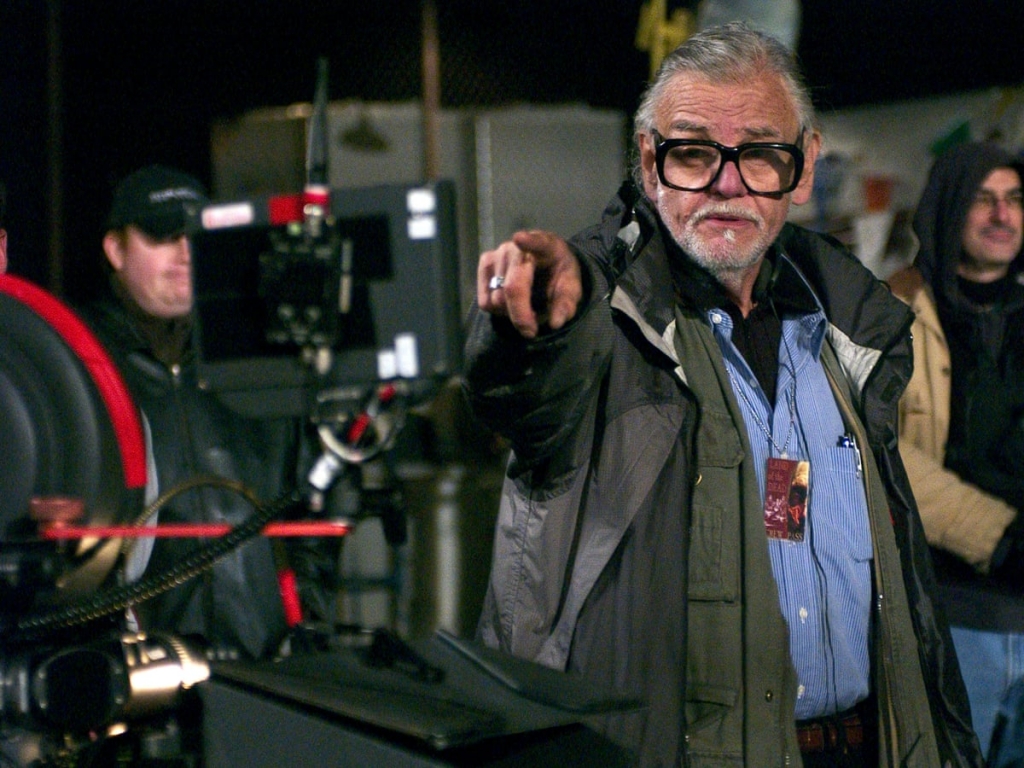
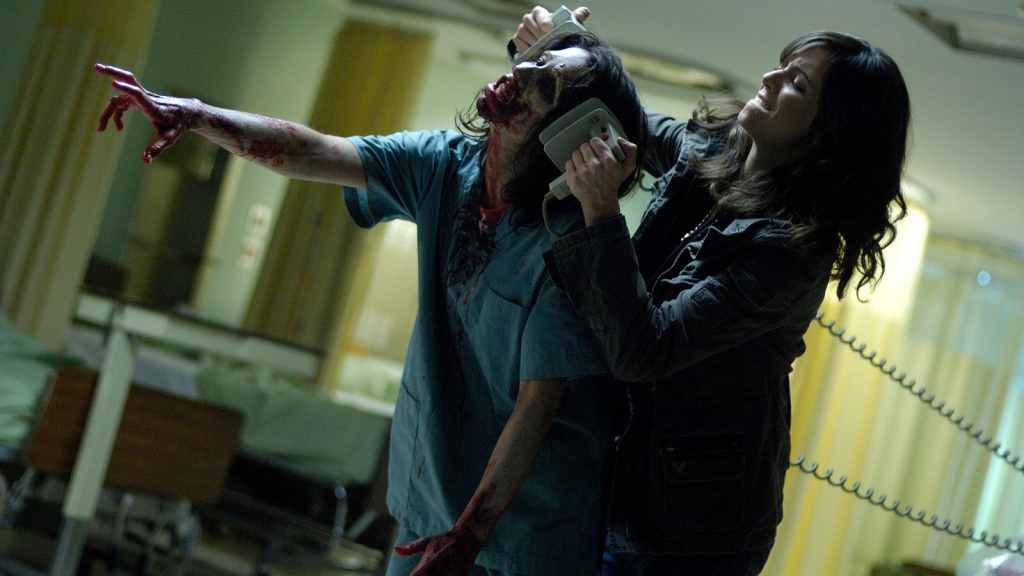
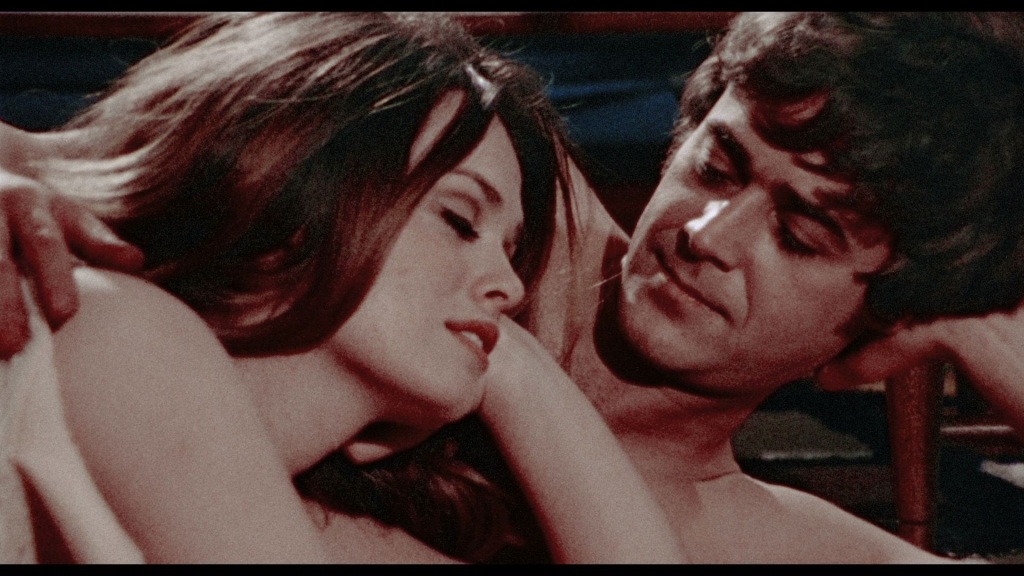
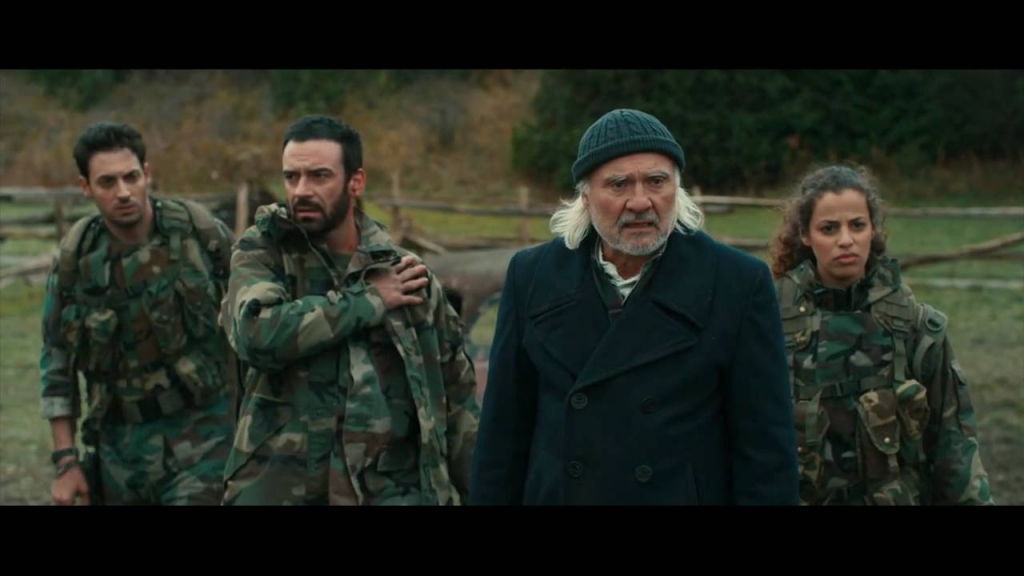
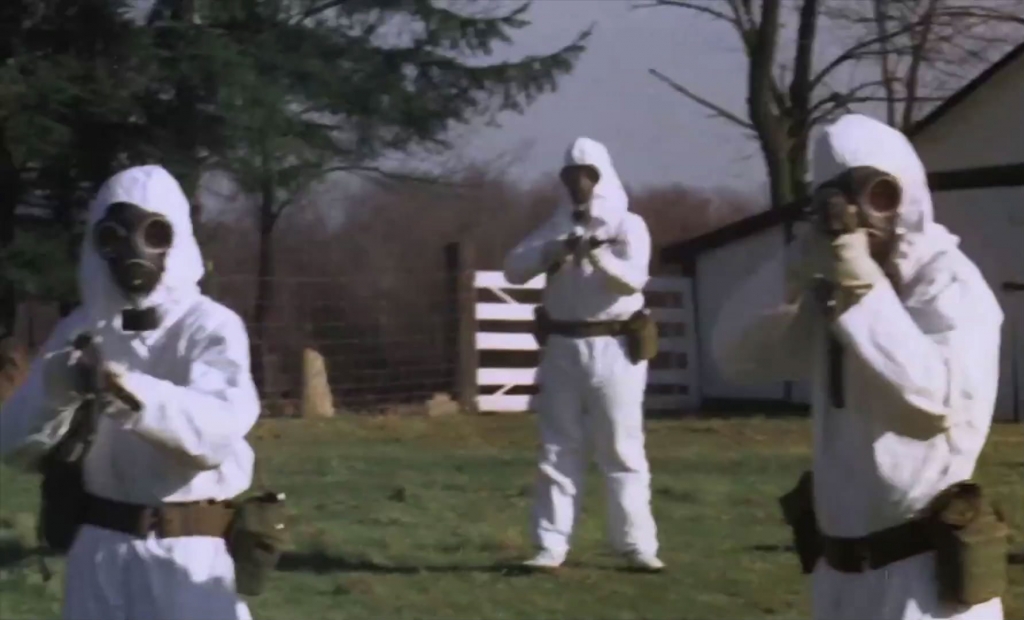
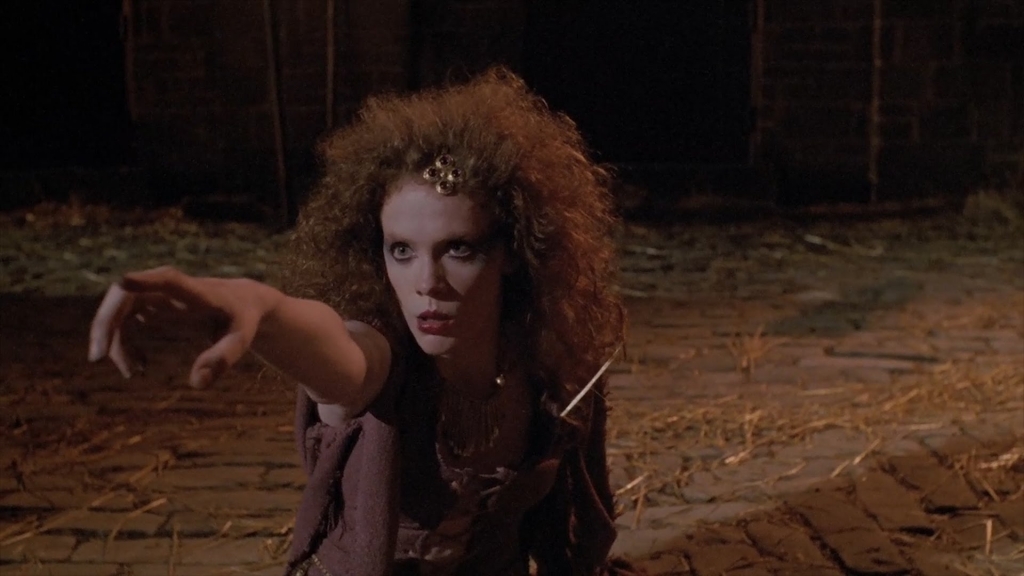
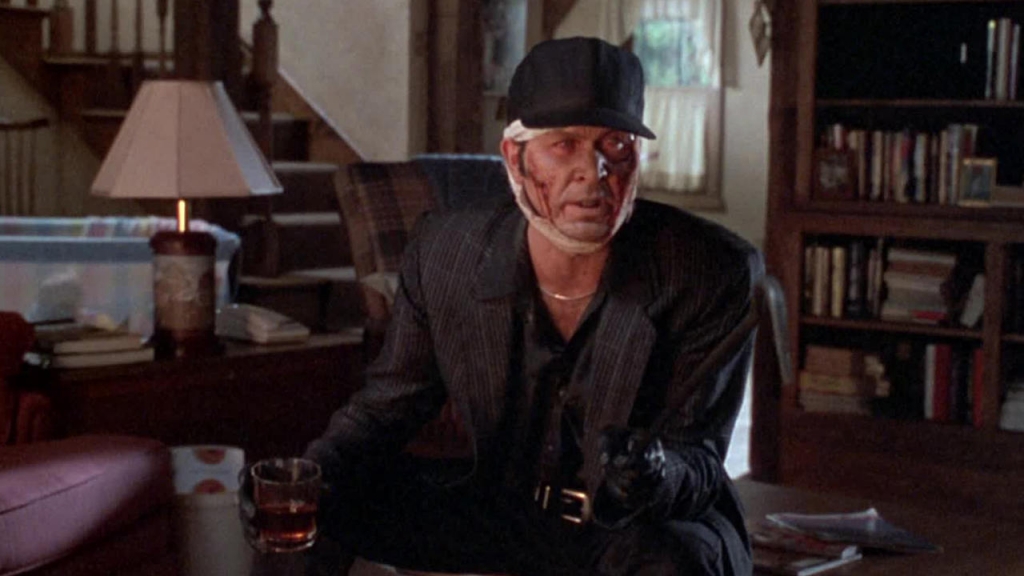
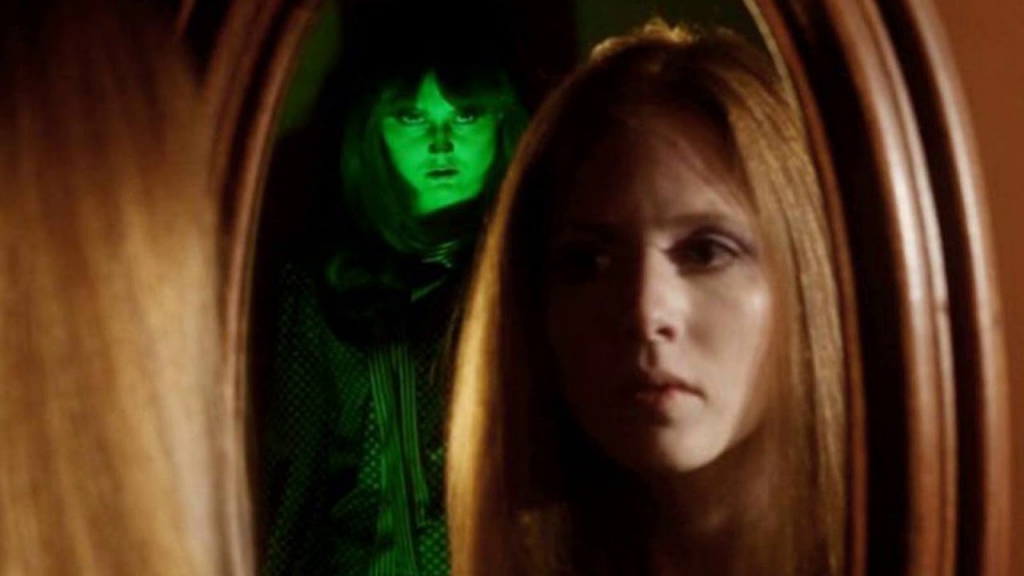
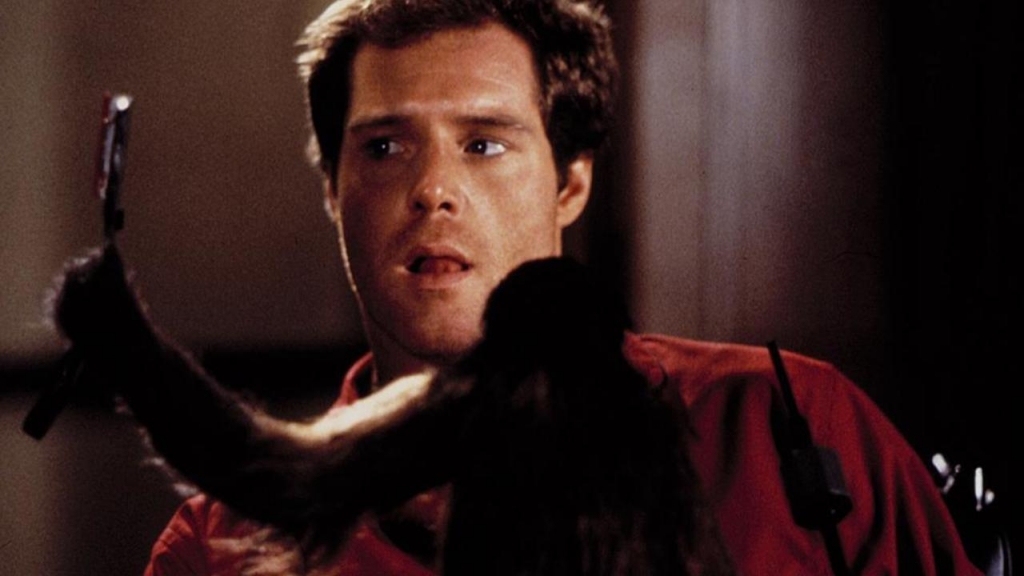
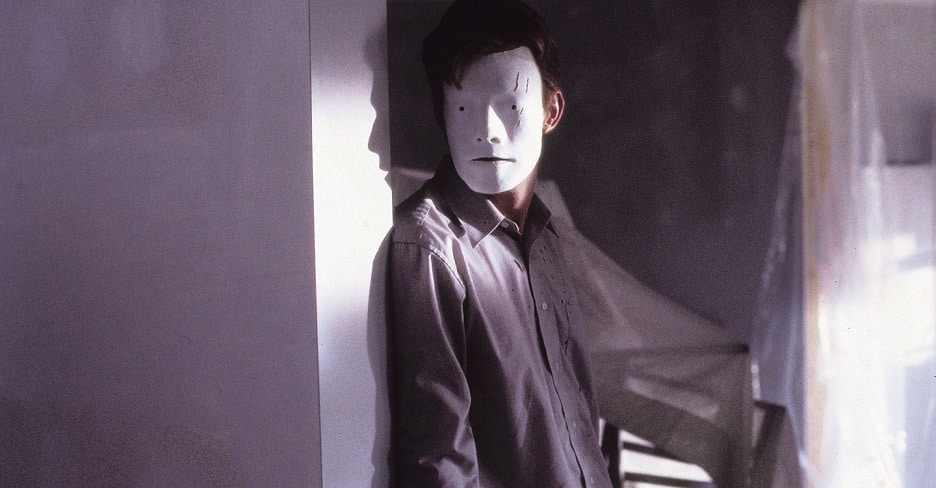
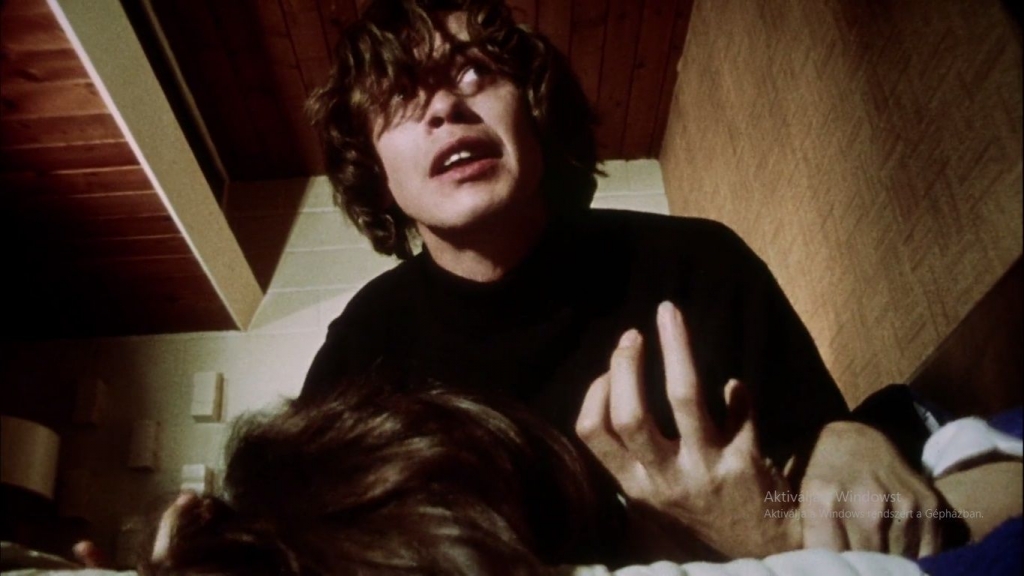
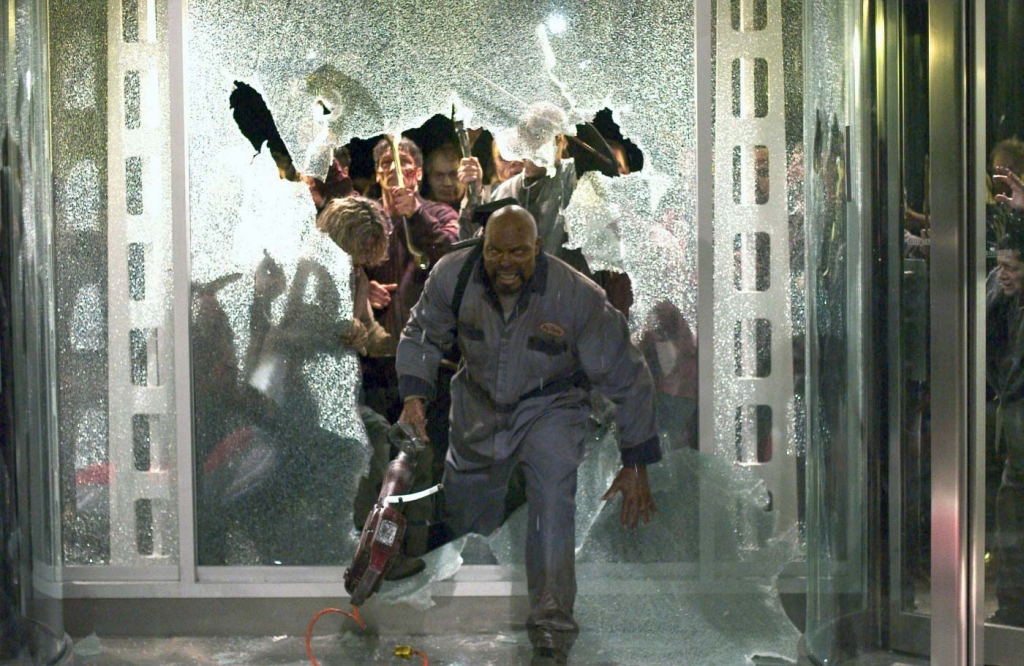
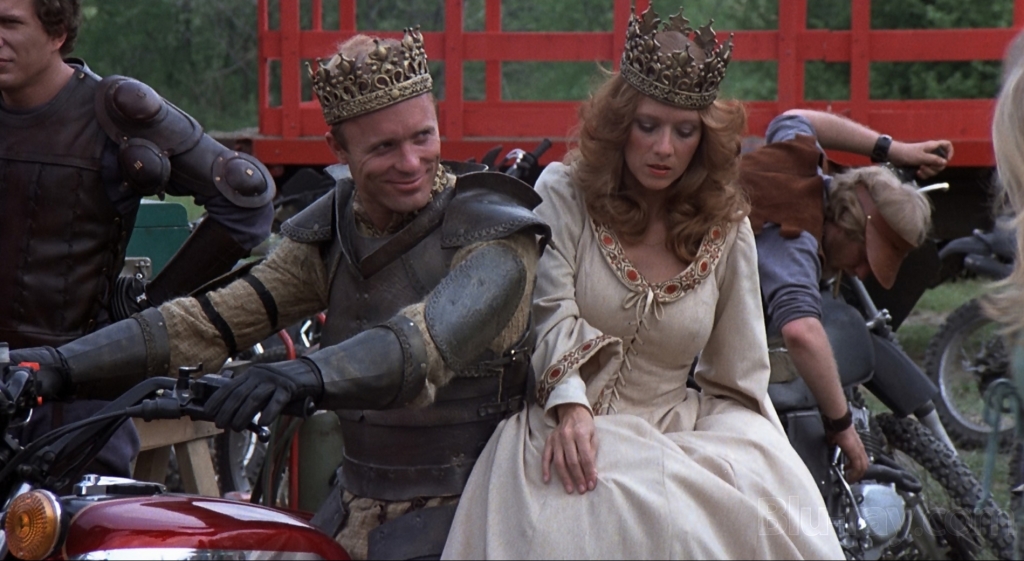
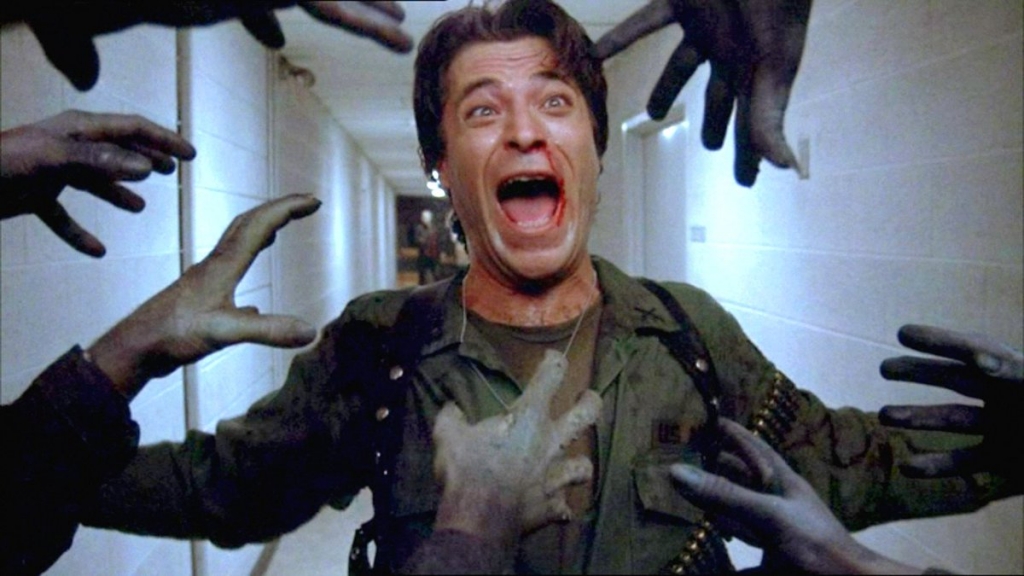
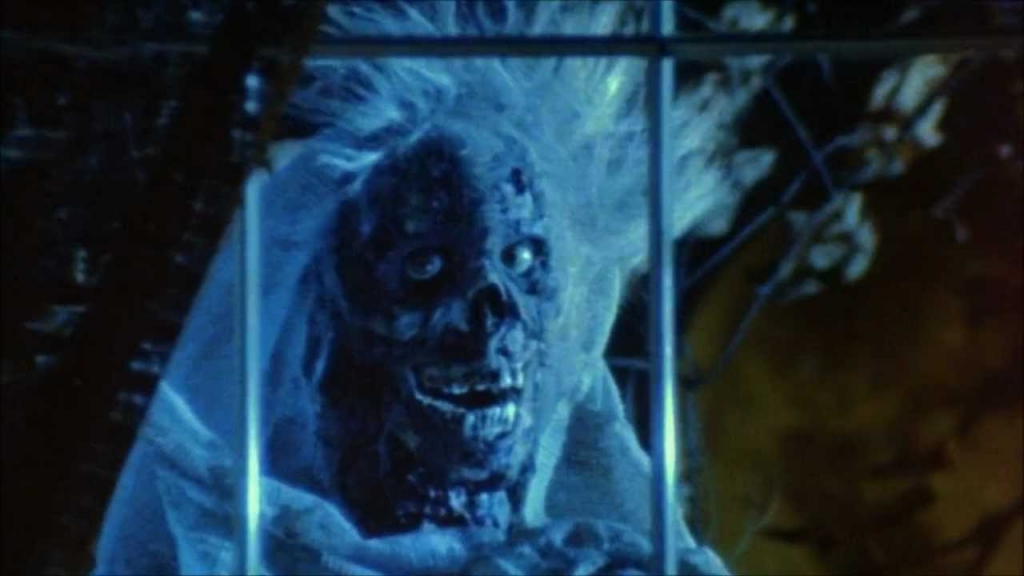


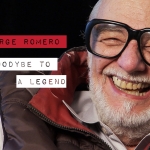
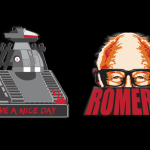
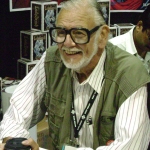







Follow Us!